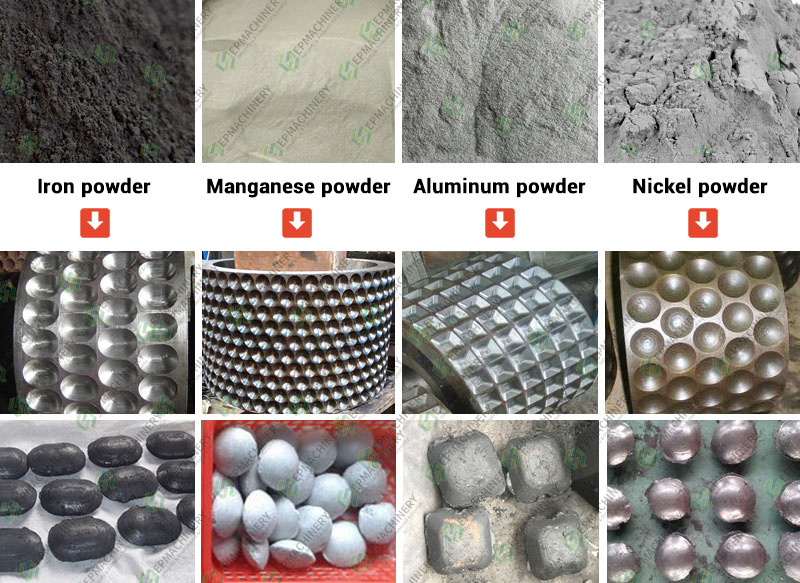
Iron Ore Fines is the core raw material for steel smelting. Its fine particle size (usually <6mm) and low bulk density lead to two core problems:
- Transportation and storage loss: Powdered materials are prone to dust (dust loss rate is as high as 5%-8%), and are prone to moisture and agglomeration during transportation;
- Smelting efficiency constraints: Direct use of ore powder in blast furnaces will reduce permeability and increase coke consumption (the cost of each ton of molten iron increases by 10%-15%).
The iron ore powder briquetting machine converts the ore powder into high-density block materials (30-60mm) through high-pressure cold pressing technology, achieving:
- ✔ The bulk density is increased to 2.8-3.2g/cm³ (the original ore powder is only 1.5-2.0g/cm³)
- ✔ Dust emissions are reduced by more than 90% (in line with ISO 14001 environmental protection standards)
- ✔ The blast furnace coke ratio is reduced by 8%-12%, and the production capacity is increased by 15%-20%

Equipment selection
| Type | Advantage | Applicable scenarios |
| Hydraulic roller type | Stable pressure (200-300MPa), high strength of finished products | High value-added minerals (hematite, magnetite concentrate) |
| Mechanical stamping type | Low energy consumption (≤30kWh/t), simple maintenance | Large-scale continuous production (port transfer station) |
| Screw extrusion type | Adapt to high moisture (15%), low investment cost | On-site processing of small-scale mines |
Iron ore powder briquetting machine is not only an innovative equipment for traditional metallurgy, but also a key technical node to achieve the "dual carbon" goal. As the global steel industry transforms towards short processes and low carbonization, the synergistic value of this equipment in aspects such as value-added utilization of mineral powder, clean transportation, and intelligent production will continue to be released, promoting green upgrades of the entire industry chain.






